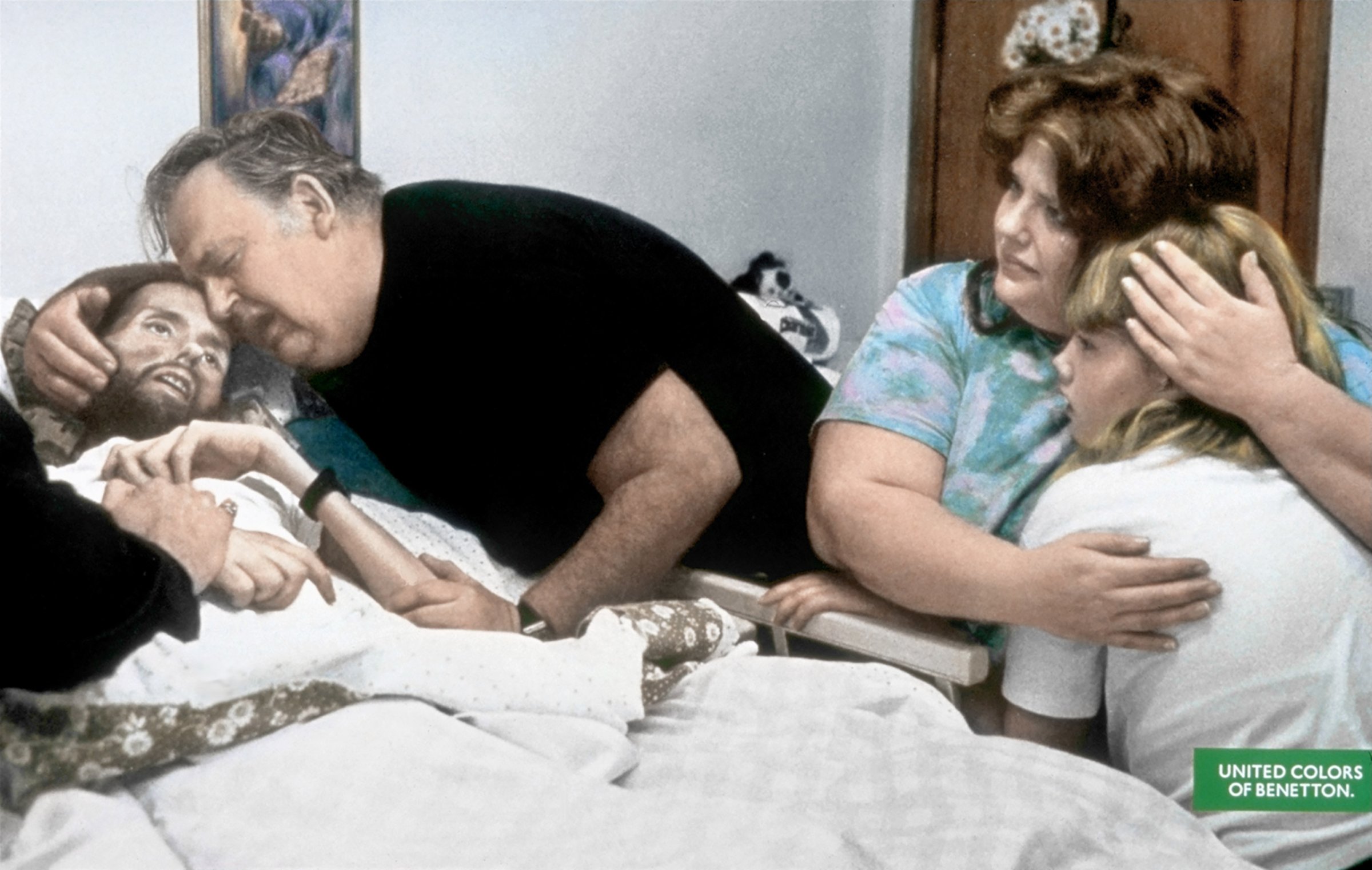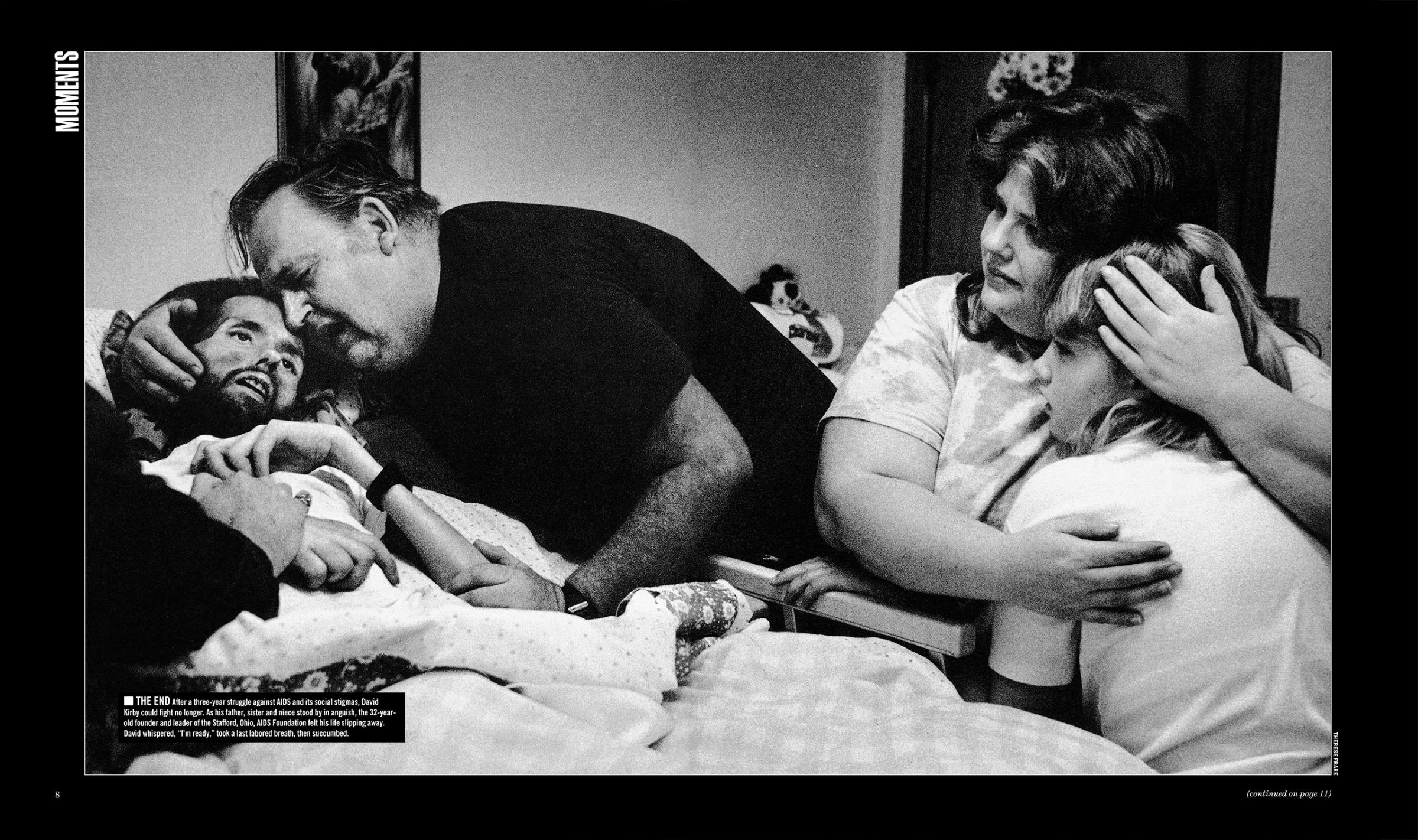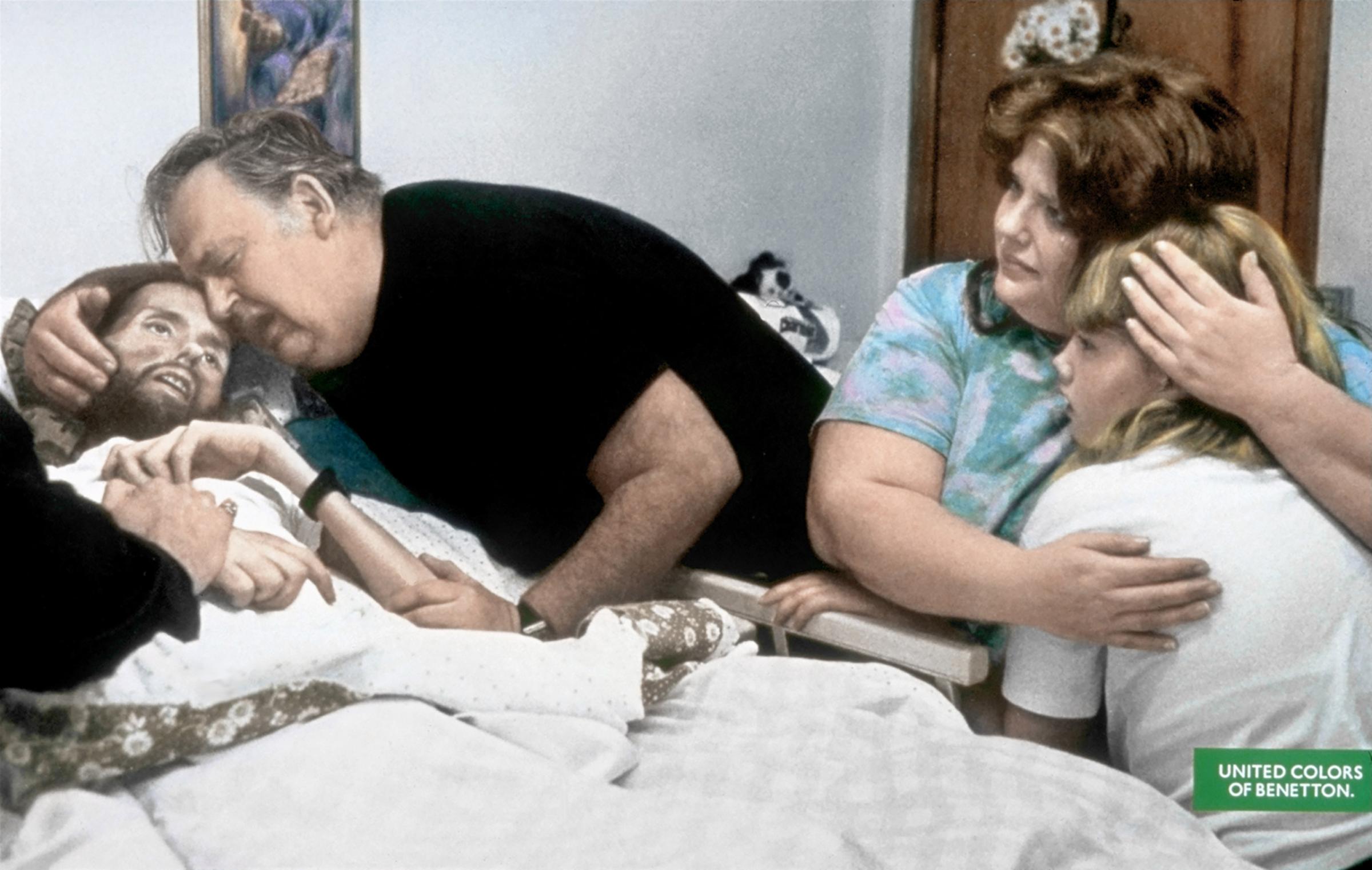
The dignity of David Kirby, who lay in a hospital bed dying of AIDS in 1990, is palpable. In his final moments, surrounded by his distraught family, Kirby looks beyond the room, into a world unknown. The now iconic photograph, taken by journalism student Therese Frare and published for the first time in LIFE magazine, quickly became a powerful symbol for the epidemic that had already ravaged millions around the globe.
For some, that dignity was taken away when, two years later, the photograph was branded with the Benetton logo and used in an ad to sell clothes. The then-creative director at Benetton, Oliviero Toscani, saw his role as creating campaigns out of “meaning and issues that advertisers don’t normally want to deal with.” At that time, AIDS certainly seemed like an issue that nobody – not even the U.S. government – wanted to deal with. That year the disease had become the number one cause of death for U.S. men aged 25 to 44. Benetton saw its role as altruistic, while David Kirby’s father Bill saw the advert as an opportunity to raise more awareness. “Benetton is not using us, we’re using Benetton,” he told Frare.
“When I saw Theresa’s image in LIFE, I said: ‘That’s the picture’. [David] looks like Jesus Christ but he’s dying of AIDS. It’s like a painting,” said Toscani. “The only problem was, it was in black and white and I wanted them to be realistic – color is realistic.” That’s when editor-and-chief of Benetton’s COLORS magazine, Tibor Kalman, called in Ann Rhoney, a colorist who worked by hand with oil paints. Pre-Photoshop, the painstaking process of bringing a photograph to life using paint was an exact art and, with a scene as potent as this, a lot was at stake. “I wanted the picture to have a peaceful quality,” Rhoney tells TIME. “The whole idea of colorizing it was to make it look realistic, so there was a lot of pressure to deliver that. To just miss the mark by a shade would have been a complete disaster.”
After getting the assignment, Rhoney worked through the night of Christmas Eve 1991, dashing around New York City trying to get materials as snow was falling and shops were shutting for the holidays. Rhoney works using a removal process; putting down the paint on to the image and then removing it with cotton around a toothpick. “I only have a 24 hour window before the paint dries and it’s not like Photoshop where you can go back and change something,” she says. “It’s an actual oil painting.” As the night wore on and Rhoney continued to work without pause, she became more and more absorbed in the haunting scene. “The more I looked at the image the more I just internalized what was going on here,” she explains.
By that time, Rhoney had lost a lot of friends to AIDS and had just shot a Newsweek cover, The Future of Gay America; so her investment in the subject ran deep. “I just wanted to get David’s dignity. I think the same feeling Therese must have had,” she explains. Rhoney says showing the finished work to Kalman was a poignant moment. “Tibor was just really emotional when he saw what I’d done,” says Rhoney. “If you look at it there’s white light in it, there’s white light in their faces. It’s real. I remember we just looked at it and went: ‘Ah.’ We were emotionally moved.”
But while Rhoney and Kalman may have been satisfied with the results, large swathes of the public felt otherwise. Benetton said they were trying to raise awareness of the issue, but the clothing brand was accused of using a man’s suffering as a commodity. Gay rights activists took to the streets calling on a boycott of Benetton. But Rhoney insists that Kalman wasn’t doing this for profit: “He was really trying to make people feel this thing.” Ultimately Kirby’s father had the final say: “If that photograph helps someone… then it’s worth whatever pressure we have to go through.”
Ann Rhoney is a colorist and photographer whose work is in the permanent collection at The Metropolitan Museum of Art, and The Albright-Knox Art Gallery among others.
Alexandra Genova is a writer and contributor for TIME LightBox. Follow her on Twitter and Instagram
Follow TIME LightBox on Facebook, Twitter and Instagram



More Must-Reads from TIME
- Why Trump’s Message Worked on Latino Men
- What Trump’s Win Could Mean for Housing
- The 100 Must-Read Books of 2024
- Sleep Doctors Share the 1 Tip That’s Changed Their Lives
- Column: Let’s Bring Back Romance
- What It’s Like to Have Long COVID As a Kid
- FX’s Say Nothing Is the Must-Watch Political Thriller of 2024
- Merle Bombardieri Is Helping People Make the Baby Decision
Contact us at letters@time.com